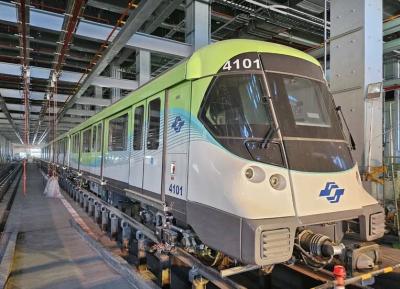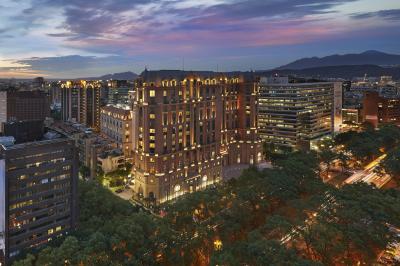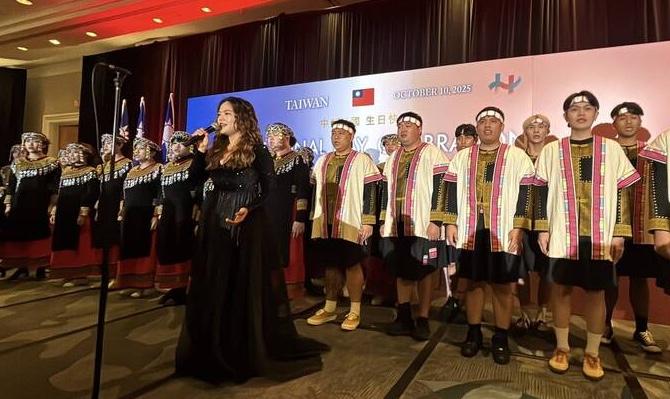Taipei’s Maokong Gondola has accumulated losses of about NT$230 million (US$7.6 million) due to poorly designed cabins and a lack of promotion since 2010, becoming the biggest money-losing transportation form in the capital, according to figures released by the Taipei Rapid Transit Corp (TRTC).
The gondola system, which began operation on July 2007, recorded a NT$98 million annual loss in 2010 and a NT$83 million loss last year, following the system’s reopening in 2010 after having been suspended for 18 months due to safety concerns.
In the first half of this year, the system accumulated a NT$50 million deficit, partly due to major maintenance work that shut it down for a month. The system’s loss for this year is expected to be as high as NT$100 million.
In light of the mounting losses, the National Audit Office demanded that the Taipei City Government address the matter during an annual report on government spending last year.
The city decided to include the gondola’s losses in its Property Development Fund and then use profits made by the Taipei Arena, which, like the gondola, is run by the TRTC, to offset the accumulated deficits.
The Taipei Arena generated NT$130 million in revenue last year, more than enough to balance out the gondola system’s losses while still bringing in a NT$60 million surplus to the fund.
“It’s [so far] feasible to cover losses with the combined profits gained by the company’s two businesses,” TRTC general manager Tan Gwa-guang (譚國光) said.
President Ma Ying-jeou (馬英九) saw the gondola, which was built during his term as Taipei mayor and cost the city NT$1.3 billion, as his greatest mayoral achievement.
“Some said I have achieved nothing during my eight-year tenure as Taipei mayor and only knew how to jog and swim. Now it proves that I also know how to construct a cable car system,” Ma said at the gondola’s opening ceremony.
The system did enjoy a period of initial success, when all the stations were inundated by scores of people lining up for up to two hours to take a ride on the weekend.
It also recorded a single-day record of 23,000 passengers.
However, the popularity was short-lived, as the system was shut down for 18 months starting in 2008 because of safety concerns after the foundation of a support pillar was eroded during a typhoon.
“A wrongful policy is even more horrendous than corruption,” Democratic Progressive Party (DPP) Taipei City Councilor Wang Shih-chien (王世堅) said.
Wang said Ma had rushed to start construction in a bid to appeal to voters.
“It turned out that the seeming glory of the system at the time was nothing but a pipe dream, because it was just a money-losing proposition that no private corporation will be willing to take and whose financial distress will only go from bad to worse,” Wang said.
Chinese Nationalist Party (KMT) Taipei City Councilor Lee Ching-yuan (李慶元) blamed the dwindling popularity of the gondola on the lack of action on the part of Taipei Mayor Hau Lung-bin’s (郝龍斌) administration to build a leisure area.
Taipei City Bureau of Transportation Director Lin Chih-ying (林志盈), who has served under both Ma and Hau, said that passengers rode the gondola only to “try it out.”
“Because of limitations imposed by land use regulations around the mountainous area of Maokong, we have not developed tourist attractions,” Lin said.
The TRTC said it was stepping up promotions, as well as reducing internal expenses, such as personnel and electricity.

The Taipei Mass Rapid Transit (MRT) Wanda-Zhonghe Line is 81.7 percent complete, with public opening targeted for the end of 2027, New Taipei City Mayor Hou You-yi (侯友宜) said today. Surrounding roads are to be open to the public by the end of next year, Hou said during an inspection of construction progress. The 9.5km line, featuring nine underground stations and one depot, is expected to connect Chiang Kai-shek Memorial Hall Station to Chukuang Station in New Taipei City’s Jhonghe District (中和). All 18 tunnels for the line are complete, while the main structures of the stations and depot are mostly finished, he

Taipei is to implement widespread road closures around Taipei 101 on Friday to make way for large crowds during the Double Ten National Day celebration, the Taipei Department of Transportation said. A four-minute fireworks display is to be launched from the skyscraper, along with a performance by 500 drones flying in formation above the nearby Nanshan A21 site, starting at 10pm. Vehicle restrictions would occur in phases, they said. From 5pm to 9pm, inner lanes of Songshou Road between Taipei City Hall and Taipei 101 are to be closed, with only the outer lanes remaining open. Between 9pm and 9:40pm, the section is

The first global hotel Keys Selection by the Michelin Guide includes four hotels in Taiwan, Michelin announced yesterday. All four received the “Michelin One Key,” indicating guests are to experience a “very special stay” at any of the locations as the establishments are “a true gem with personality. Service always goes the extra mile, and the hotel provides much more than others in its price range.” Of the four hotels, three are located in Taipei and one in Taichung. In Taipei, the One Key accolades were awarded to the Capella Taipei, Kimpton Da An Taipei and Mandarin Oriental Taipei. Capella Taipei was described by

The Taipei Economic and Cultural Office in Vancouver, Canada, on Saturday hosted a reception to celebrate Double Ten National Day. Conservative Canadian lawmaker Marc Dalton called Taiwan a “beacon of courage and resilience in the face of rising authoritarianism,” according to a post on the Taiwan in Vancouver Facebook page. Also in attendance were fellow conservative caucus members Tako Van Popta and Chak Au, who said that Taiwan plays an “indispensable role” in ensuring global peace, prosperity and stability due to its strategic position in the Indo-Pacific region, it said. Canadian lawmaker Michael Cooper also recorded a message wishing Taiwan a